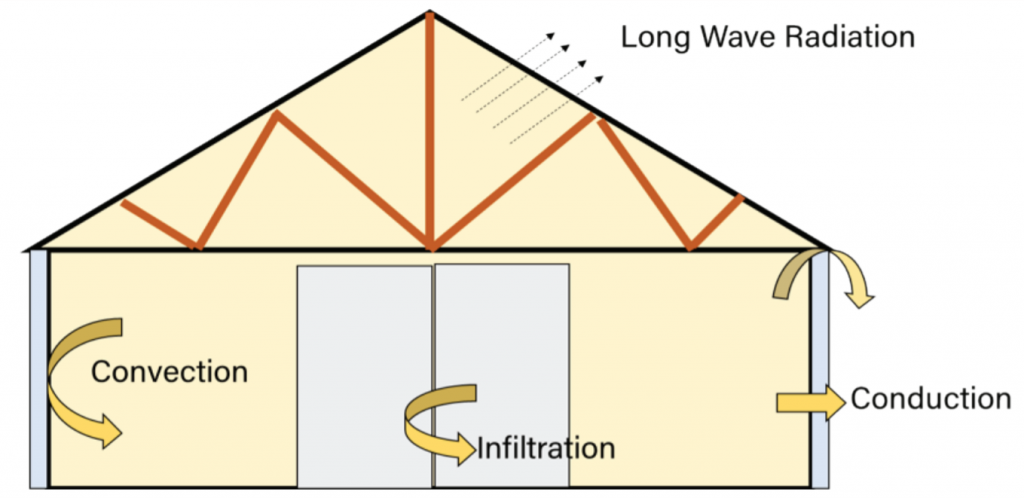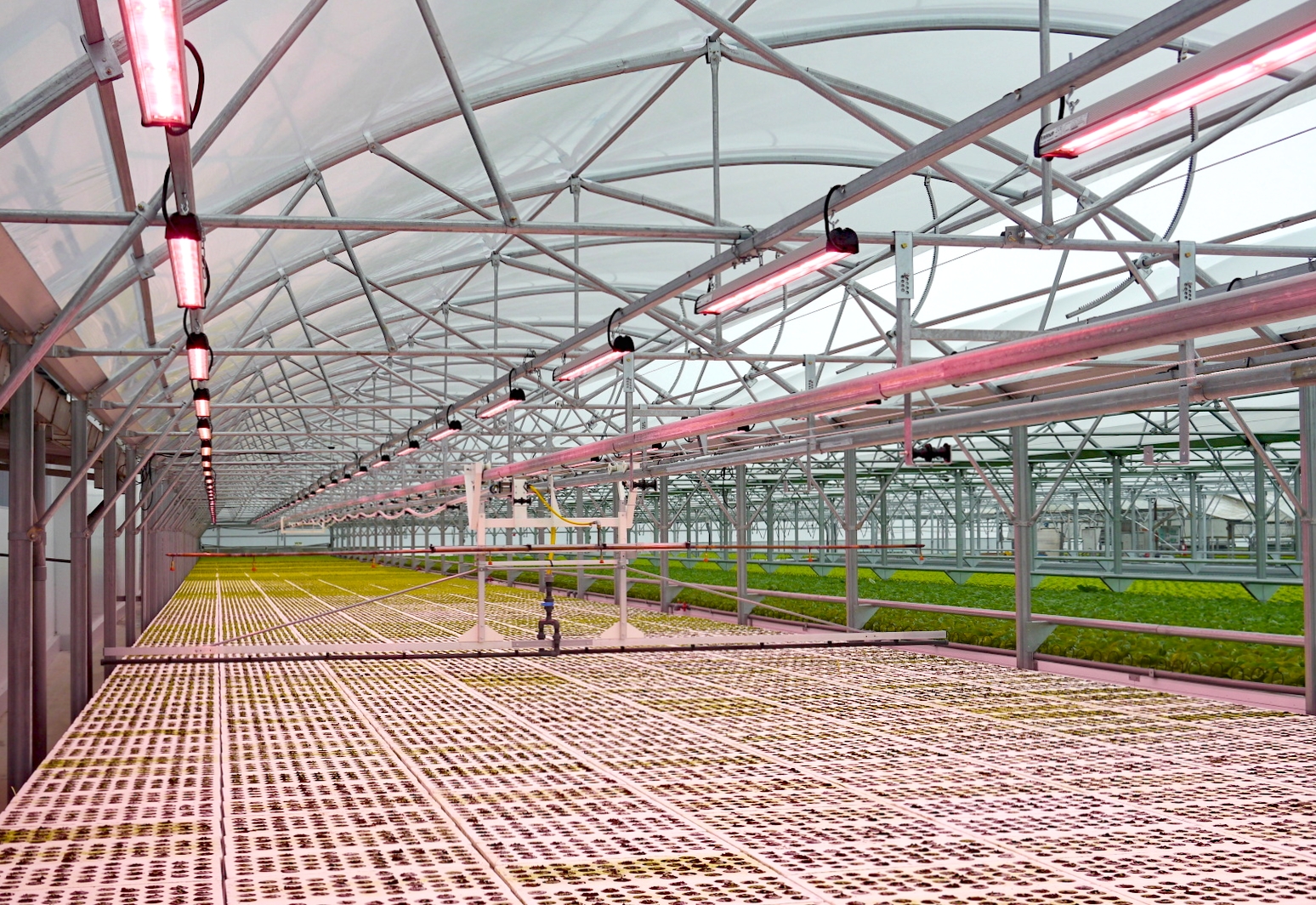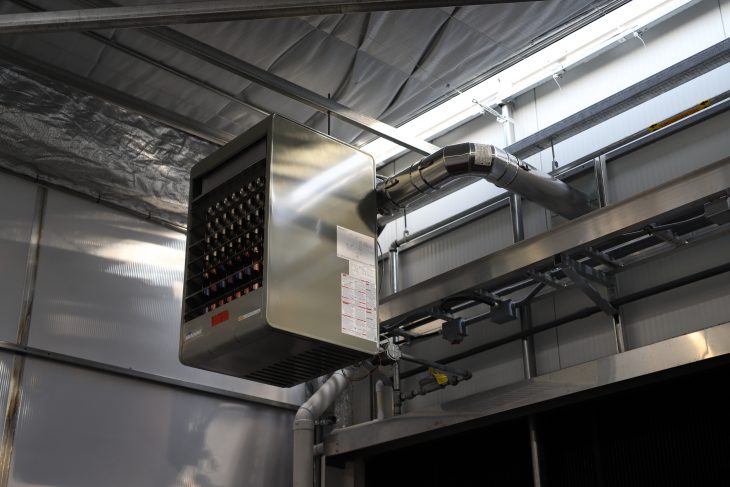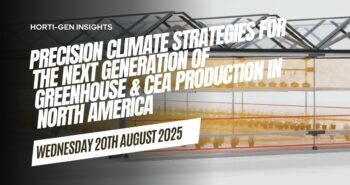This post is also available in: ![]() English
English ![]() Français (French)
Français (French)
Introduction
In some regions of North America, such as Quebec, heating costs represent up to 30% of production costs. In fact, heat can easily be lost by infiltration in the smallest gaps left in the greenhouse such as openings or doors.
Moreover, the heat is also lost by conduction. It means that it occurs when heat is transferred between two bodies in direct contact. On the other hand, when heat is transferred via a fluid like water or air to the surface of an object, it is called convection.


Selecting the right cover material will have a major impact on the heat transfer coefficient of your greenhouse.
In a greenhouse without equipment, there are heat differences between the ground and the top of the structure. Indeed, the hot air will tend to accumulate at the top of the greenhouse, which creates a temperature gradient in the production areas.
This article will focus on the importance of heat uniformity in a greenhouse to maintain a consistent temperature in the growing area.
How do you keep the heat uniform inside a greenhouse?
In tomato cultivation, temperature control affects the plant’s vigor, its growth rate, and the ratio between the production of vegetative and reproductive parts (Turcotte et al., 2018). Therefore, it is imperative to be able to manage the heating temperature and its uniformity in the greenhouse.
Below are some ideas on how to better manage your hot air uniformity in your greenhouse:
- MONITOR YOUR FURNACE AIRFLOW: to avoid drying out of the plants and stratification of the warm air in the greenhouse, large quantities of warm air at a high flow rate and warm air at a low flow rate must be transported. Balancing the temperature and airflow of the furnace are important parameters.
- OPTIMIZE THE FURNACES / UNIT HEATERS LOCATION: the strategy for locating the equipment in the greenhouse will optimize hot air exchanges and their homogeneity in the production area. Moreover, supplying the heat near the crops (roots zone) is more efficient in providing uniform temperatures to the crops.
- COMBINE YOUR HEATING SYSTEM WITH HAF: circulation fans or HAF are mandatory to mix the air, creating a uniform climate (temperature/humidity/CO2) inside the greenhouse. Air change assumptions (vol/hour) must be adapted to the crops.
- INSTALL INSULATED KNEEWALLS: it will reduce the heat loss close to your crops avoiding thermal shocks and an edge effect on the sides of the greenhouse.
- ADD AN ENERGY SCREEN (THERMAL) TO YOUR GREENHOUSE: (if possible) Install an energy screening system to reduce the volume that needs to be heated in the greenhouse. However, you will also have to consider the shading capacity (%) ventilation to ensure the climate conditions will suit your crops. It is better to ask a specialist to advise you on selecting the right clothes.
- SELECT A DOUBLE-LAYER ROOFING COVER: using an inflated poly cover or double wall polycarbonate (PCSS) with a gap-containing air in between will reduce the conductive heat loss.
- SELECT THERMAL POLY TO YOUR INNER GLAZING: thermicity is an important characteristic of your poly film. A poly film with a thermal treatment will keep more infrared radiation inside the greenhouse. Infrared radiation emits heat when it touches a surface.
- REMOVE THE DUST OR CHANGE YOUR OLD POLY: a dirty cover will block a part of the sun’s radiation, reducing the heat transfer to your greenhouse. What is more, it will create heterogeneity in some areas of your greenhouse. if your polycarbonate/poly is too old the best thing is to replace it!
Sources:
Garduño-García, Á., López-Cruz, I., & Ruiz-García, A. (2017). Mathematical modeling of greenhouse solar dryers with natural and forced convection for agricultural products: state of the art.
Temperature Control in Greenhouses (Purdue University):
https://www.extension.purdue.edu/extmedia/HO/HO-327-W.pdf
Turcotte, G., 2008. Tableau de compilation des données culturales. Rayonnement solaire
global hebdomadaire et mensuel. Une période difficile pour la qualité de la tomate.
Tom’Pousse 1-5





